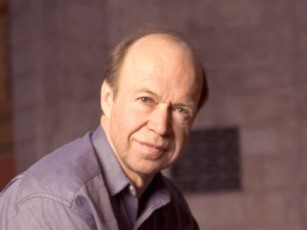Brad Plumer has a nice little video over at TNR today, playing off Oregon governor Ted Kulongoski’s comment that meeting our climate goals will mean cutting back on consumption and consumerism — that is, it will require the dread “lifestyle changes.”
Brad notes that efficiency and renewable power don’t necessarily force any lifestyle changes. (A vacuum cleaner that uses less electricity, and gets its electricity from wind power, is still a vacuum cleaner — you still vacuum with it.) There may be some, particularly in transportation (smaller cars), but a low-carbon America will look a lot like a high-carbon America, lifestyle-wise.
That’s good as far as it goes. But I’d add two important points:
1. It is true that we can make serious emission reductions without impacting the lifestyle of the average American at all. We could get emissions down quite a bit just by matching the carbon productivity (tons of CO2 emitted per unit of GDP) of Japan or the state of California. Let’s say 20%, or even 30%, in the next couple decades.
Remember, though, to really get where we need to go we need to get as close as possible to carbon neutral by 2080. That’s close to 100% reductions. That means not just boosting renewables a little but virtually eliminating fossil fuels. And because renewables will never be able to provide the sheer concentrated quantities fossil fuels provided, we’re going to have to figure out how to diffuse and decentralize our energy system and radically increase the intelligence with which we use energy.
Power will have to be harvested virtually everywhere, stored by virtually everything, managed by ubiquitous IT. People will have to live closer together in communities served by transit. Land will have to be used more intelligently; carbon sinks will have to be cultivated.
All this will mean changes in the way Americans live. But …
2. Americans are always changing their lifestyles. In just my living memory, shopping has moved to the web, interpersonal communication has become ubiquitous, urbanization has accelerated, newspapers have all but died, etc. etc. Lifestyles are never static. It’s just that people don’t tend to notice lifestyle changes as such because they happen gradually.
What people fear are not lifestyle changes but abrupt decreases in quality of life. People fear losing what they’ve got. That’s what the “lifestyle change” debate is code for in the green space. So it’s worth emphasizing:
3. Changing to a low-carbon economy could increase our quality of life. Living in cities well-served by transit is quite pleasant, as I can testify having just returned from Barcelona and Paris. Raising a garden, or eating healthy, locally grown food is pleasant. Eliminating your electricity bills is pleasant, as is being aware of and in control of your personal power consumption. Getting rid of your car is pleasant. Etc.
Point is, quality of life is not, contra Republicans, intrinsically attached to fossil fuel use. It’s not even intrinsically attached to material plenty. It’s not attached to ownership. It’s what we do, what’s available for our use, and most of all our connections to family, friends, and community that make for a good life.
So, I really feel like Kulongoski and folks like him are not being very helpful. It’s fine to acknowledge that shifting to a low-carbon economy will involve big changes, but there’s no reason to feed the fear that those changes will be disruptive and unpleasant. They needn’t be.



